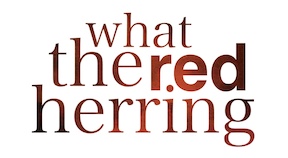
Back when I was on Facebook, I participated in an internet pyramid scheme where participants each sent a used copy of their favorite book to the person at the top of the list. Just like the chain letters of old, your name would keep getting bumped up the list as more people were invited to join in. When you reached the top of the list, you would get books in the mail from the other participants.
I hope the others who signed up did as well as I did. I received 7-10 books out of the deal. I was sent classics, nonfiction, and books I’d never heard of. I received a historical fiction novel I’d already read and loved. I am still working my way through the stash.
One of them migrated over to the Chaplain’s reading pile early on and I forgot about it. It floated to the top of his pile and I caught sight of it and asked him about it, not remembering where it came from. “Oh, I borrowed that from you,” he told me. I took it back and started reading.
Learning to Walk in the Dark, by Barbara Brown Taylor, is a meditation on the dark, a thought experiment. Taylor holds darkness and examines it from every side, then writes about what she discovers.
I’m a night nurse. I love the dark. After my initial check on my patients, I can often go an entire shift working completely in the dark, using a flashlight as needed. At home, twinkling Christmas lights and 40 watt bulbs glow low and friendly in the evenings.
Instead of cold, bright nightlights, our bathrooms are dimly lit after dark by yellow and amber lights, which are supposedly better for a sleepy brain. All of my devices are set to fade to a rosy glow after the sun goes down and stay that way for an hour after it comes up again the next morning (I use the flux app on my laptop, and my Idevices’ Night Shift setting to make the screens less offensive after dark).
When I go for walks with the Chaplain at night, I am drawn towards the poorly lit routes, away from the overly bright exterior lights around businesses and other buildings, making me feel like I could have used a pair of sunglasses. Dark to me has often felt safe, even tempting.
In her exploration of physical darkness, Taylor looks at the rhythms of the moon, light pollution, and the changes electrifying the world brought to bear.
While we take day and night for granted, spiritual darkness can be a little harder to swallow. With experience one learns that each period is inevitably temporary, but often, those dark times still feel incredibly hopeless.
Taylor talks about a Christianity that has failed many of us with its upbeat inability to sit with us in our pain when things get rough. With this type of faith, the honeymoon is never over. That has never been my experience. The honeymoon moments in my faith are few and far between, golden beams of light that remind me of the ecstasy, but are gone all too quickly.
…when faith is reduced to believe in creeds and doctrines, plenty of thoughtful people are going to decide that they no longer have faith. They might hang on if they heard the word used to describe trust or loyalty in something beyond the self…”
The book had an unhurried pace, and short chapters. It was well suited to a few pages of reading at a time. The ideas meshed well with the other book I’ve been reading (at a much slower pace), The Universal Christ, by Richard Rohr.
One of my favorite sections of the book was about learning to be familiar with our own emotions, especially those we might tend to avoid. The author did an exercise where she colored in human outlines for each emotion, making a visual representation for how each emotion felt to her.
I’m highly visual, and this approach made immediate sense to me. I also have a tendency to stack emotions, muddying them, and in the past, I’ve been unwilling to explore their source. This small artistic endeavor invited me to just see what my emotions look like to me. That’s something even my kids could do.
I did an online search for human outlines in order to make a worksheet for illustrating emotions with the kids. I was disappointed by the available options. I didn’t take time to putter with it further, even though I could probably draw my own gender neutral outline (which is what I wanted: everything was either a muscular man, or a curvaceous woman, or The Ugliest Child Ever). Ever the perfectionist, I allowed this to prevent me from doing this project. But it is still on my wish list of emotional IQ activities for the future.
I was encouraged by Taylor’s reflection on scriptural manifestations of God in darkness. She provides more examples that I expected. She reflects, when in darkness, “…the best way to to see the inner light and remain in its presence [is] to love.”
Whether or not you’re in the dark right now, human experience has likely taught you that even Children of the Light end up spending a fair amount of time in the dark. It could be the physical darkness of night, where fear or the inability to sleep take us places we’d rather not go. Maybe it’s spiritual darkness, taking us to new levels of knowing God if we let it (and maybe even when we don’t).
Taylor doesn’t offer overly simple answers or cheap ideas, she simply invites us to explore the dark with her, and reexamine what it means to us.







